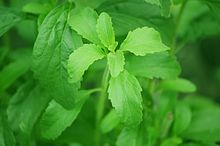**History and Regulatory Status**:
– Stevia was first described by Swiss botanist Moisés Santiago Bertoni in 1899.
– French chemists isolated the glycosides in stevia responsible for its sweetness in 1931.
– Early regulation in the U.S. and Europe saw bans on stevia until the 1990s and 2000s.
– Safety evaluations by the World Health Organization in 2006 and 2016 found no adverse effects.
– FDA’s journey from disagreement to approval of certain refined stevia preparations as generally recognized as safe (GRAS).
– Various countries like Japan, Brazil, Malaysia, and Australia have approved stevia or its derivatives as food additives.
**Commercial Use and Industrial Extracts**:
– Stevia was first used as a sweetener in Japan with purified steviosides.
– Coca-Cola and PepsiCo introduced products with stevia-based sweeteners.
– Extraction process of steviol glycosides from Stevia rebaudiana plants.
– Marketing of extracts under trade names like Rebiana, Truvia, PureVia, and EverSweet.
– Separation and purification of glycosides using crystallization techniques with solvents like ethanol or methanol.
**Mechanism of Action and Health Benefits**:
– Steviol is the basic building block of stevia’s sweet glycosides.
– Interaction with a protein channel called TRPM5 amplifies taste sensations.
– Metabolism of steviol by intestinal microflora and the liver.
– Health benefits include antidiabetic activity and enhancement of pancreatic beta-cell function.
– Traditional medicinal uses of stevia leaves and regulatory approval by various health authorities.
**Concerns, Restrictions, and Research**:
– Mutagenic effects of steviol and rebaudioside A.
– Regulatory concerns in countries like the Russian Federation and issues with forced labor.
– Toxicology studies on compounds like rebaudioside A.
– Research on genetic toxicity and systematic reviews of stevia.
– Import alerts and detention orders issued by regulatory bodies.
**Culinary Impact, Market Presence, and Industry Partnerships**:
– Influence on the global sweetener market and introduction of beverages sweetened with stevia by companies like Coke and Cargill.
– Approval of stevia for use in various countries and regions.
– Industry partnerships like the joint venture between Olam and Wilmar to enhance stevia product production and distribution.
– Legislative acts and food safety authorities overseeing the use of stevia in food products.
– Collaboration between food safety authorities and industry players to regulate and promote the use of stevia as a sweetener.
Stevia (/ˈstiːviə, ˈstɛviə/) is a sweet sugar substitute that is about 50 to 300 times sweeter than sugar. It is extracted from the leaves of Stevia rebaudiana, a plant native to areas of Paraguay and Brazil in the southern Amazon rainforest. The active compounds in stevia are steviol glycosides (mainly stevioside and rebaudioside). Stevia is heat-stable, pH-stable, and not fermentable. Humans cannot metabolize the glycosides in stevia, and therefore it has zero calories. Its taste has a slower onset and longer duration than that of sugar, and at high concentrations some of its extracts may have an aftertaste described as licorice-like or bitter. Stevia is used in sugar- and calorie-reduced food and beverage products as an alternative for variants with sugar.
The legal status of stevia as a food additive or dietary supplement varies from country to country. In the United States, certain high-purity stevia glycoside extracts have been generally recognized as safe (GRAS) and may be lawfully marketed and added to food products, but stevia leaf and crude extracts do not have GRAS or Food and Drug Administration (FDA) approval for use in food. The European Union approved Stevia rebaudiana additives in 2011, while in Japan, stevia has been widely used as a sweetener for decades.

The plant Stevia rebaudiana has been used for centuries by the Guaraní peoples of South America, who called it ka'a he'ê ("sweet herb"). The leaves have been used traditionally for hundreds of years in both Paraguay and Brazil to sweeten local teas, and as a "sweet treat". The genus was named for the Spanish botanist and physician Pedro Jaime Esteve (Petrus James Stevus, 1500–1556) a professor of botany at the University of Valencia.
